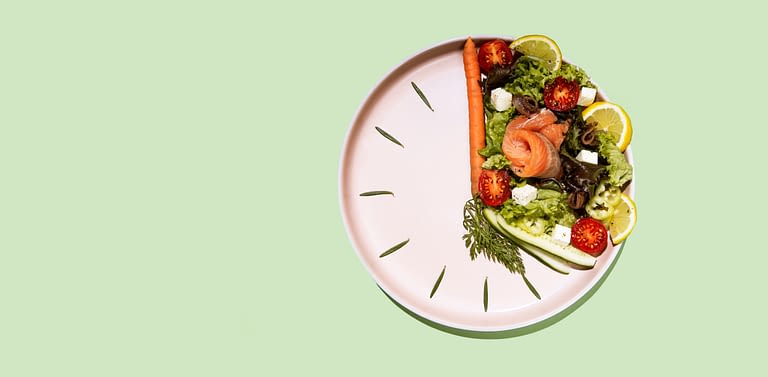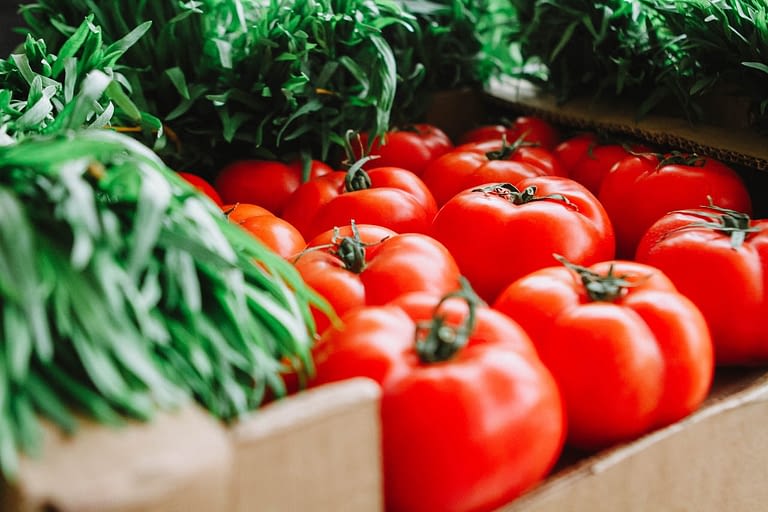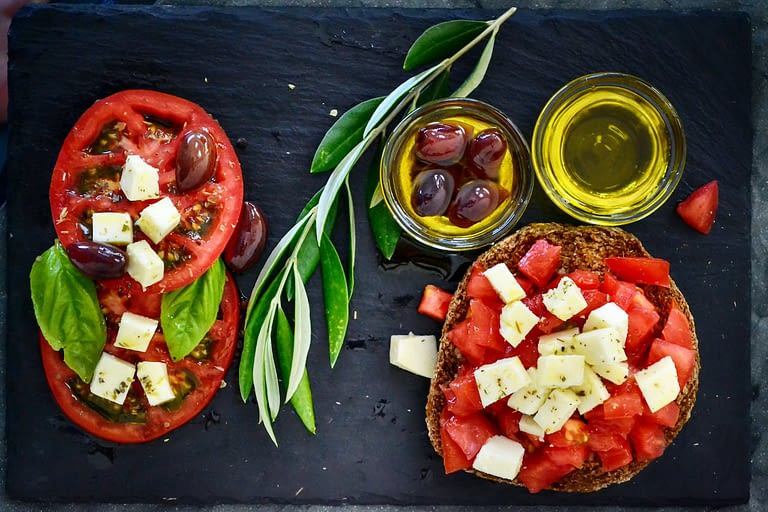Can You Eat Sourdough Bread On The Mediterranean Diet?
The Mediterranean diet combines the perfect balance of tradition and health-conscious choices. Celebrated for its emphasis on fresh, whole foods and heart-healthy fats. Sourdough bread has recently gained popularity, with its minimal ingredients, artisanal allure and unique fermentation process. In this exploration, we delve into the characteristics of the Mediterranean diet, unravel the secrets of sourdough, and ponder the question: Can you enjoy sourdough bread while embracing the Mediterranean way of life?
The Mediterranean Diet
The Mediterranean diet is more than just a meal plan; it’s a lifestyle rooted in the culinary habits of countries bordering the Mediterranean Sea. Defined as being rich in fruits, vegetables, whole grains, olive oil, and lean proteins, this diet has been lauded for its potential to promote heart health, reduce inflammation, and provide diverse nutrients.
Please Note – Some of the links in this post are affiliate links, meaning that if you click through and make a purchase, I will receive a small commission at no extra cost to you.
What is Sourdough Bread?
Sourdough bread is a testament to the simplicity and artistry of bread-making. Crafted simply from a mixture of flour and water naturally fermented by wild yeast and lactic acid bacteria. Sourdough undergoes a slow fermentation process, resulting in its distinctive tangy flavor, chewy texture, and the presence of beneficial microorganisms.
In contrast, commercial bread relies on added yeast for a quick rise and often many other unwanted ingredients. While sourdough requires time and patience, symbolizing the slow food movement.
With its minimal ingredients and natural fermentation, sourdough aligns seamlessly with the whole-food focus of the Mediterranean diet. It complements the diet’s emphasis on whole grains, providing a source of complex carbohydrates and promoting better digestion.
Benefits of Eating Sourdough
There are three notable benefits to eating sourdough:
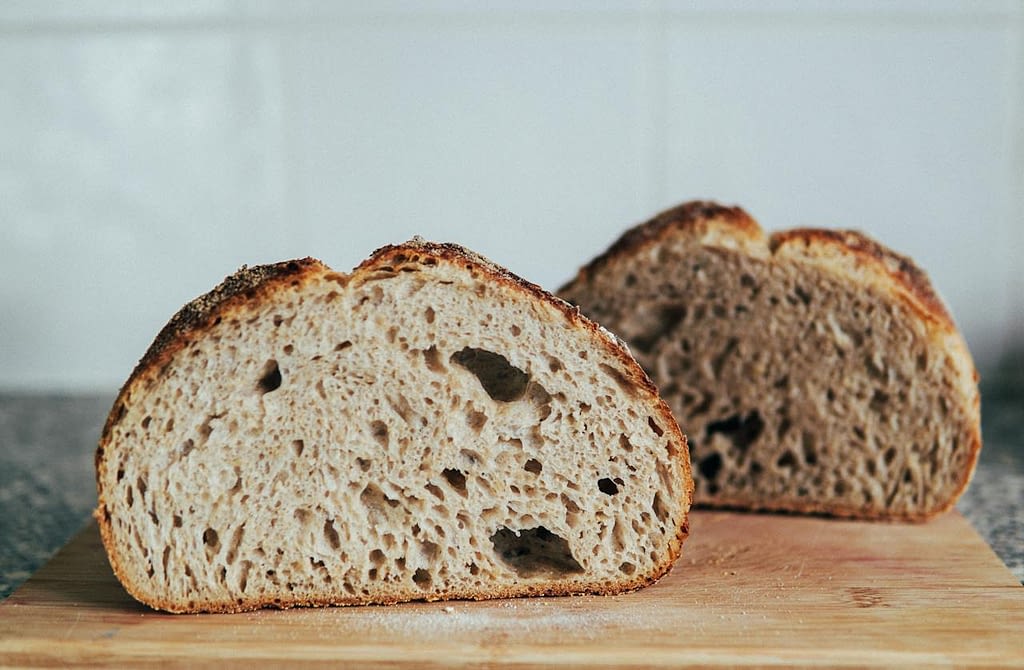
Improved Digestibility
The fermentation process in sourdough breaks down gluten and phytic acid, potentially making it easier to digest for individuals with mild gluten sensitivity and improving mineral absorption.
Rich in Nutrients
Sourdough bread offers a spectrum of nutrients, including B vitamins, minerals, and antioxidants. The slow fermentation increases the number of prebiotics and enhances the bioavailability of these nutrients, contributing to improved gut health.
Potential Blood Sugar Benefits
Generally, when we eat simple carbohydrates made from sugar and refined grains, our blood sugar rises as we digest them. Sourdough has what is referred to as a lower Glycemic index than other types of bread. Studies suggest that sourdough fermentation may lead to lower post-meal blood sugar levels than conventionally leavened bread, which benefits individuals managing blood sugar.
Crafting Your Own Sourdough Starter
Embarking on the sourdough journey involves the process of creating your own sourdough starter. This living culture of wild yeast and bacteria is the heart of sourdough bread-making.
Begin with a simple mixture of flour and water, allowing it to sit in a warm environment. As days pass, the wild microorganisms present in the flour and the environment start the fermentation process, giving rise to bubbles and that distinct tangy aroma. There are lots of great beginners guides out there to follow, as it feels quite daunting to begin with.
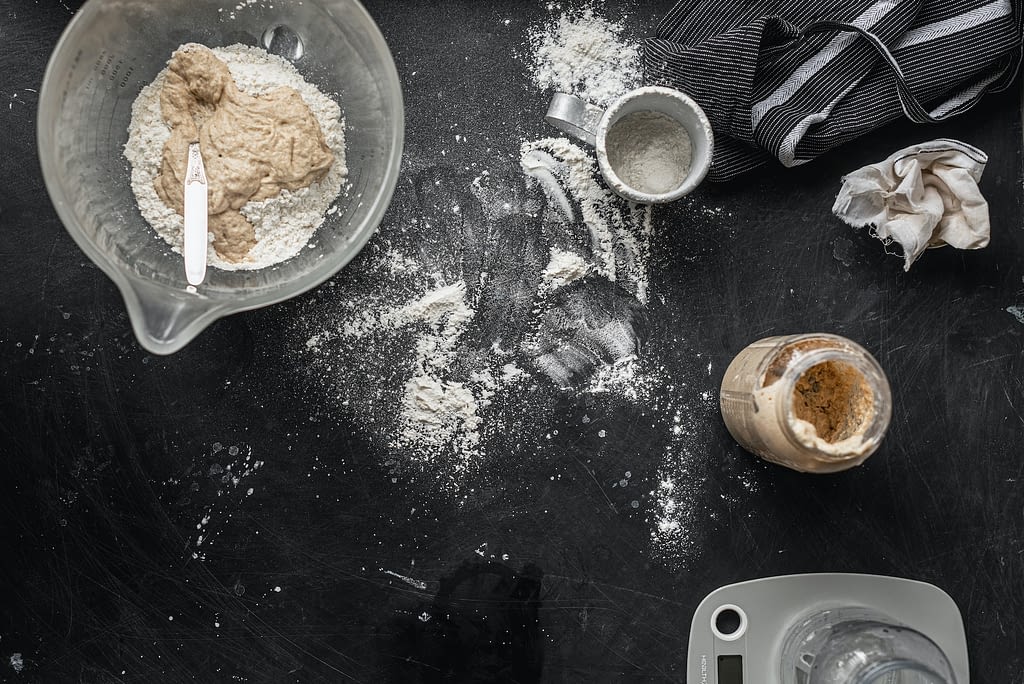
Regular feedings of flour and water nurture the starter, fostering a robust community of microbes. Patience is key; it generally takes several days for the starter to develop its full potential; mine actually took about six weeks to get into its groove. Due to the natural process so many factors affect how quickly the starter strengthens, such as the flour used, the temperature of your house, even the water can have an impact. It’s not necessary, but I found it helpful to buy the starter kit of kitchen tools.
Once it shows consistent bubbles and a pleasant sour scent, your sourdough starter is ready to transform simple ingredients into a delightful artisanal loaf. This process connects you intimately with your bread. It imparts a sense of accomplishment as you witness it all coming together from just simply flour and water. Mine has a name now and is definitely a part of the family!
After you get past the initial two weeks of feeding your starter, the discard or proportion of your starter you remove each time you feed it to keep it strong can be saved in the fridge and used in many different ways. Hence, you have little wastage and an array of healthy bacteria in all your baking.
Sourdough recipes to get you started
Classic Sourdough Boule
An excellent place to start is with a basic boule recipe. Combine flour, water, and a pinch of salt with your starter to create a dough that ferments overnight, resulting in a crusty, flavorful bread. This is a favourite of mine and one I bake several times a week.
Mediterranean Sourdough Focaccia
Infuse your sourdough with Mediterranean flair by adding olives, rosemary, and sun-dried tomatoes to the dough. Bake it into a rustic focaccia for a delightful side to salads and soups.
Sourdough Avocado Toast
Elevate your breakfast or snack by spreading ripe avocado on toasted sourdough slices. Sprinkle with sea salt and red pepper flakes for a delicious yet satisfying treat.
Summary
So, as we have seen, sourdough bread and the Mediterranean diet are two culinary treasures that coexist harmoniously.
Sourdough bread, with its wholesome attributes and artisanal charm, not only aligns with the principles of the Mediterranean diet but also adds a flavorful dimension to this celebrated way of life we all admire.
So, whether you toast it for breakfast or savor it with a Mediterranean-inspired meal, consider incorporating sourdough into your culinary repertoire for a wholesome and delicious journey. I am certainly glad I started.


